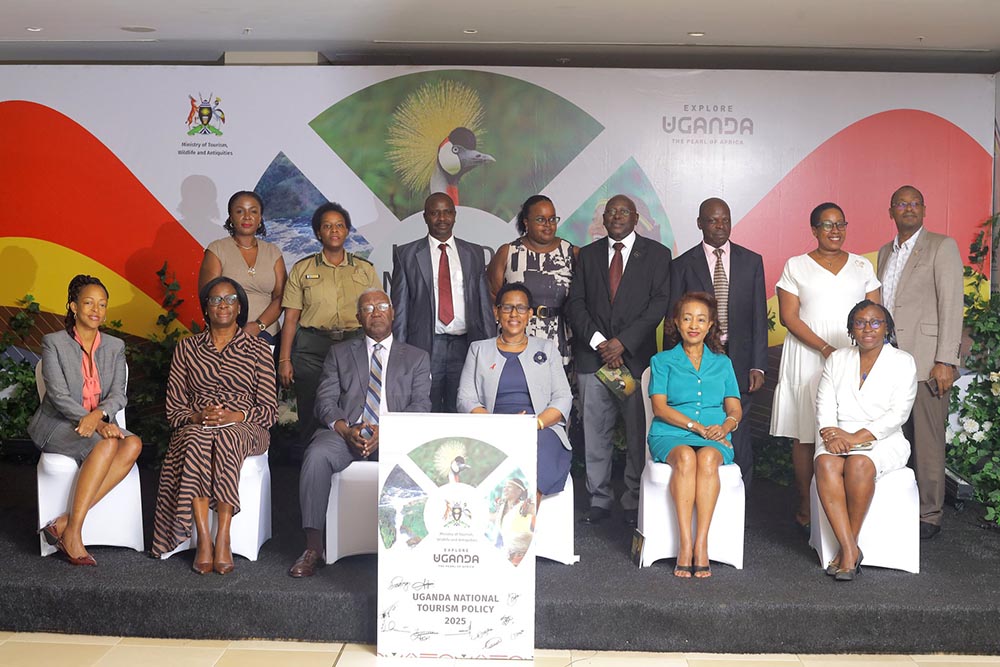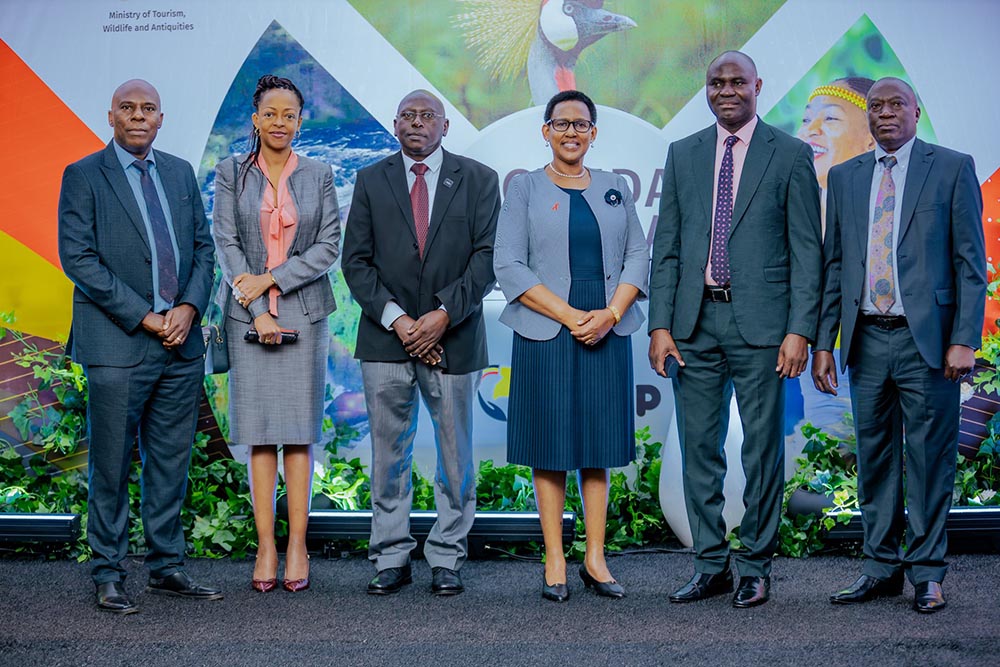New tourism policy to drive sustainable growth, competitiveness launched
“This blueprint positions tourism as a major pillar in our transition toward a $500 billion GDP. Sustainability remains central - balancing economic growth with the protection of Uganda’s natural and cultural treasures,” Butime said.
The blueprint launched on November 26, 2025, by tourism minister Tom Butime at the Sheraton Kampala Hotel comes at a time when Africa’s share of international arrivals remains low despite a strong post-pandemic recovery. (Courtesy Photo)
KAMPALA - Seeking to reclaim its competitive edge in the global travel market, Uganda has rolled out an ambitious National Tourism Policy aimed at reshaping how the country protects, promotes, and profits from its natural and cultural treasures.
The blueprint launched on November 26, 2025, by tourism minister Tom Butime at the Sheraton Kampala Hotel comes at a time when Africa’s share of international arrivals remains low despite a strong post-pandemic recovery.
During the launch, director Basil Ajay highlighted Africa’s disproportionately small share of global tourism despite being the second-fastest recovering region after the COVID-19 pandemic.
“This policy provides a transformative blueprint for the next decade. Uganda must rise beyond the current 1.4 million arrivals and claim a fairer share of global tourism,” he said.
In response, Butime explained how the strategy responds to the fast-shifting traveller trends, environmental pressures and the rapid digitalisation reshaping the global tourism marketplace.
He described the policy as a tool that aligns the sector with Uganda’s long-term economic ambitions.
Stakeholders stressed that the policy’s success will depend on coordinated implementation by government, private sector actors, communities, and development partners. (Courtesy Photos)
“This blueprint positions tourism as a major pillar in our transition toward a $500 billion GDP. Sustainability remains central - balancing economic growth with the protection of Uganda’s natural and cultural treasures,” he said.
Tourism commissioner Vivian Lyazi pointed to persistent bottlenecks, including limited investment, infrastructure gaps, and underdeveloped attractions.
“Improving the visitor experience is essential. We are prioritising accessibility, service standards, and sectorwide professionalisation. The new policy opens doors for stronger public–private partnerships, increased investment in accommodation, upgrading of attractions, and enhanced connectivity to tourism sites,” Lyazi said.
The policy places strong emphasis on climate resilience, promoting green building standards, energy-efficient infrastructure, and protection of fragile ecosystems.
Technology-driven tourism is another core component, with plans to strengthen digital marketing, adopt e-ticketing systems, build smart tourism platforms, and streamline online reservation services.

Capacity building also features prominently, with proposals to raise training standards, expand certification systems, and boost customer service skills across the tourism workforce.
Aligned with Vision 2040 and the Third National Development Plan, the new policy aims to expand revenue generation, attract more investment, create jobs, and reinforce conservation efforts nationwide.
Stakeholders stressed that the policy’s success will depend on coordinated implementation by government, private sector actors, communities, and development partners.
According to Uganda Tourism Board's Arthur Lwamafa, the policy focuses on high-growth areas like MICE tourism, AFCON 2027, cultural tourism, oil & gas linkages, and youth-led digital innovation, while strengthening safety, product development.
During the question-and-answer session, journalists pressed officials on how the ministry intends to achieve these objectives amidst limited budget allocations and staffing constraints - particularly in areas such as infrastructure, ICT connectivity, and service competence. Lyazi acknowledged these challenges but remained optimistic.

“At least we now have the blueprint. We are far ahead of where we were in the 1980s. Implementation will involve strong collaboration with the private sector and development partners,” he said.
Officials also called on the media to give tourism more prominence, arguing that increased coverage would help elevate the sector’s visibility and attract both domestic and international audiences.
The National Tourism Policy signals a new chapter for Uganda, providing a clear framework to modernise the industry, expand tourism products, support communities, and position the country as one of Africa’s most competitive and sustainable destinations.